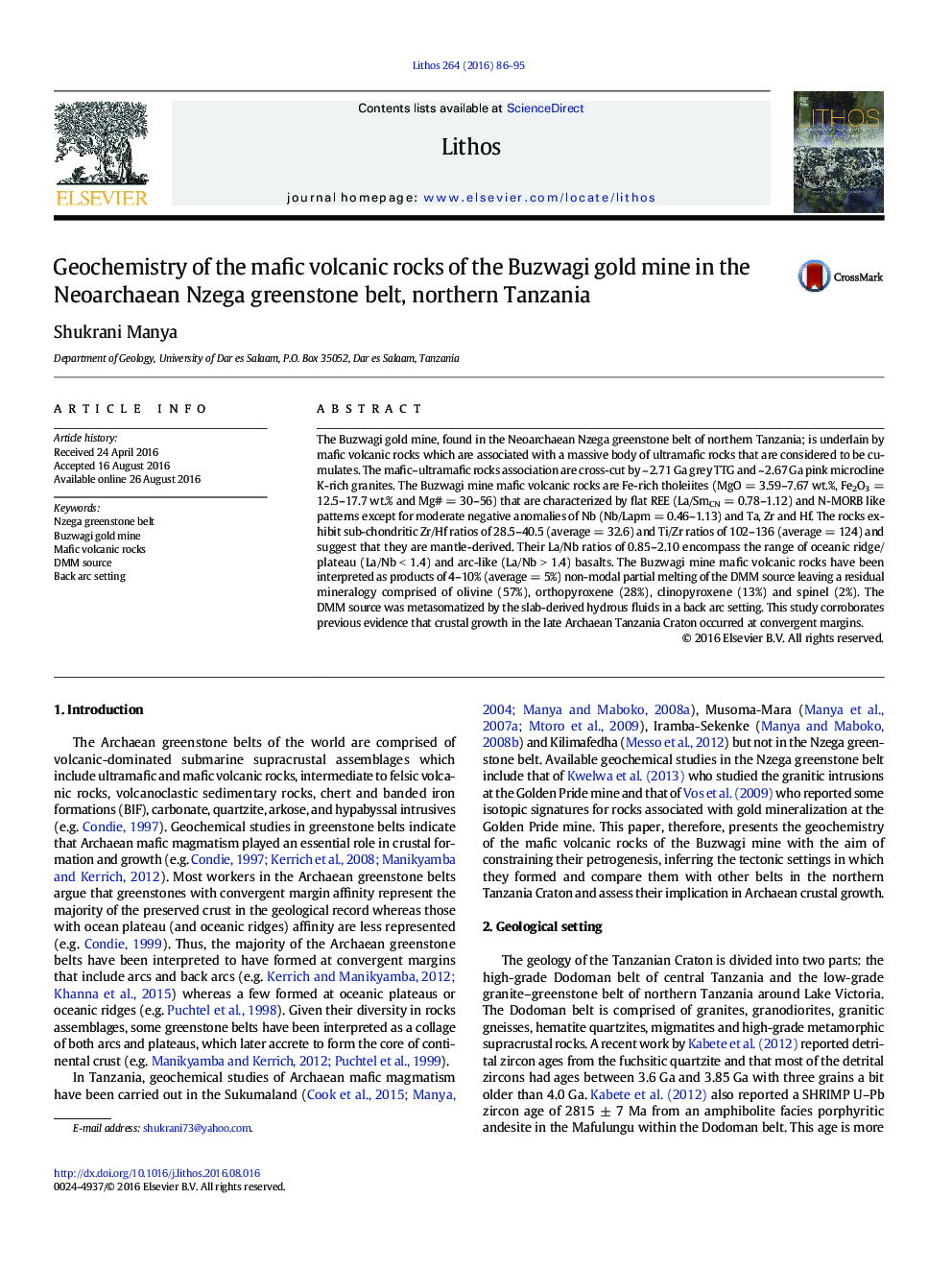| Article ID | Journal | Published Year | Pages | File Type |
|---|---|---|---|---|
| 6440232 | Lithos | 2016 | 10 Pages |
Abstract
The Buzwagi gold mine, found in the Neoarchaean Nzega greenstone belt of northern Tanzania; is underlain by mafic volcanic rocks which are associated with a massive body of ultramafic rocks that are considered to be cumulates. The mafic-ultramafic rocks association are cross-cut by ~ 2.71 Ga grey TTG and ~ 2.67 Ga pink microcline K-rich granites. The Buzwagi mine mafic volcanic rocks are Fe-rich tholeiites (MgO = 3.59-7.67 wt.%, Fe2O3 = 12.5-17.7 wt.% and Mg# = 30-56) that are characterized by flat REE (La/SmCN = 0.78-1.12) and N-MORB like patterns except for moderate negative anomalies of Nb (Nb/Lapm = 0.46-1.13) and Ta, Zr and Hf. The rocks exhibit sub-chondritic Zr/Hf ratios of 28.5-40.5 (average = 32.6) and Ti/Zr ratios of 102-136 (average = 124) and suggest that they are mantle-derived. Their La/Nb ratios of 0.85-2.10 encompass the range of oceanic ridge/plateau (La/Nb < 1.4) and arc-like (La/Nb > 1.4) basalts. The Buzwagi mine mafic volcanic rocks have been interpreted as products of 4-10% (average = 5%) non-modal partial melting of the DMM source leaving a residual mineralogy comprised of olivine (57%), orthopyroxene (28%), clinopyroxene (13%) and spinel (2%). The DMM source was metasomatized by the slab-derived hydrous fluids in a back arc setting. This study corroborates previous evidence that crustal growth in the late Archaean Tanzania Craton occurred at convergent margins.
Related Topics
Physical Sciences and Engineering
Earth and Planetary Sciences
Geochemistry and Petrology
Authors
Shukrani Manya,
